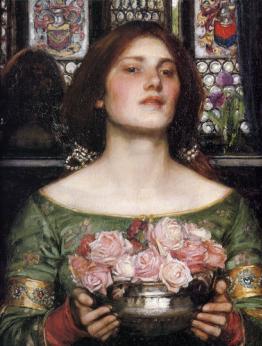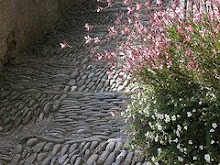
La Belle Iseult, 1858
"Bequeathed by Miss May Morris 1939"
Image courtesy of the Tate Gallery, London.
"Bequeathed by Miss May Morris 1939"
Image courtesy of the Tate Gallery, London.
"The inspiration for this painting was Thomas Malory's 'Morte d'Arthur' (1485), in which Guinevere's adulterous love for Sir Lancelot is one of the central themes. The model is Jane Burden who became Morris's wife in 1859 ... She was 'discovered' by Morris and Rossetti when they were working together on the Oxford Union murals, the subject matter for which was also taken from Malory. The painting ... is a splendid expresion of the intense medieval style prevailing in Rossetti's circle in the late 1850s, with its emphasis on pattern and historical detail. This is Morris's only completed oil painting." - courtesy the Tate Gallery
Morris wrote about Jane and the painting,
"I cannot paint you, but I love you."
It is such a beautiful work, though.
And so are the studies below.
"I cannot paint you, but I love you."
It is such a beautiful work, though.
And so are the studies below.
I do agree with what Margaret wrote about La Belle Iseult at her blog, The Earthly Paradise: "I adore this work. While Rossetti was much better at capturing the sensuous qualities of Jane and his other models, I think Morris' painting does an incredible job of envisioning a creative, romantic space. It gives one quite the "scope for the imagination" -- don't you think?" ~ Indeed.


Study for 'Iseult on the Ship' by William Morris, c. 1857
Portrait of Jane Burden. Pencil and ink.
Courtesy of William Morris Gallery. London Borough Waltham Forest.
~~~~~~~~~~~~
Portrait of Jane Burden. Pencil and ink.
Courtesy of William Morris Gallery. London Borough Waltham Forest.
~~~~~~~~~~~~
According to information at the Tate Gallery website, La Belle Iseult is currently on display at the Victorian and Albert Museum in London.















_1868.jpg)





























